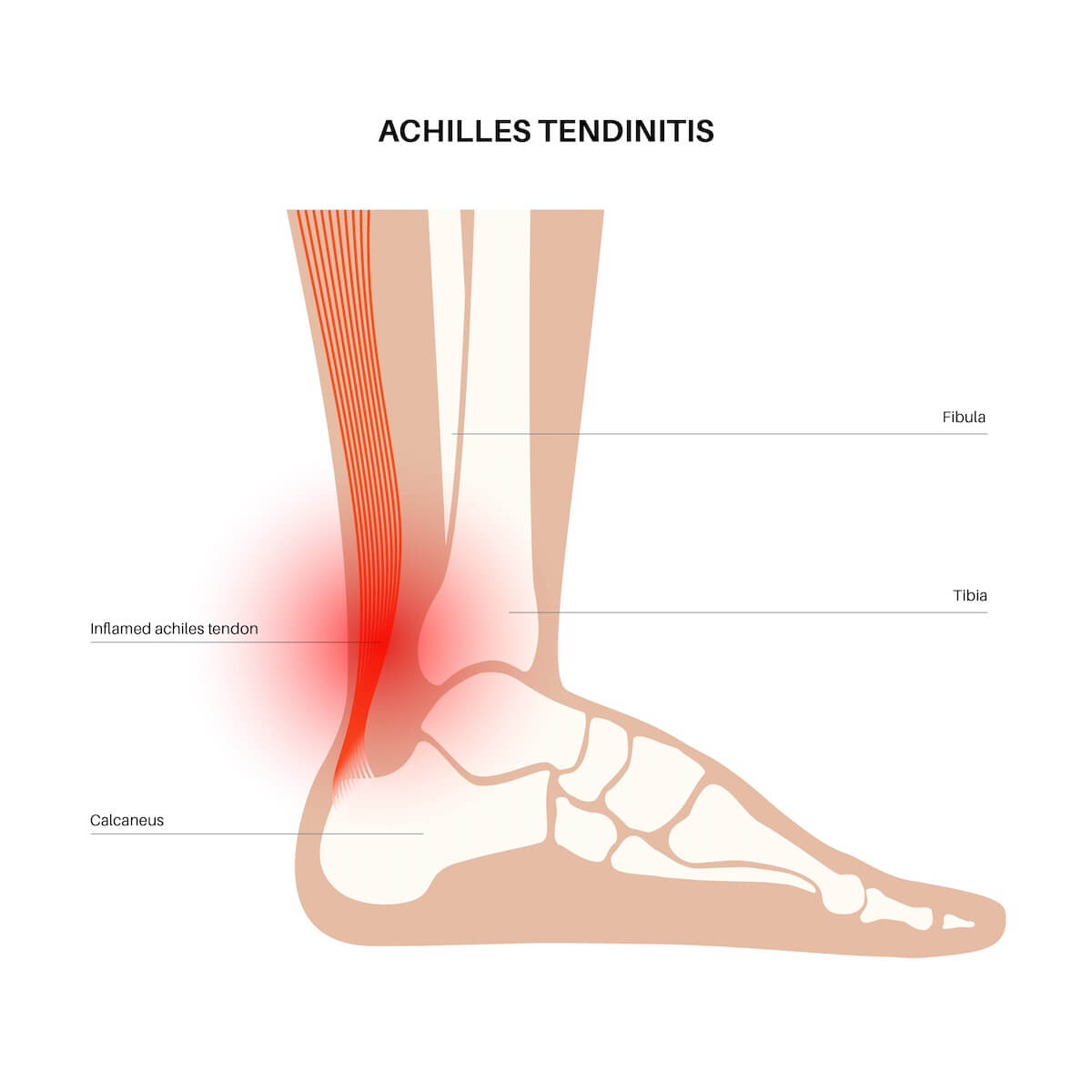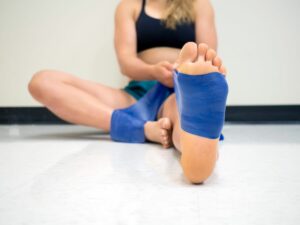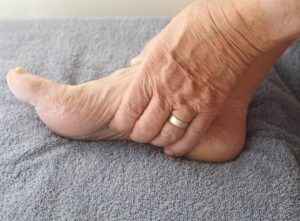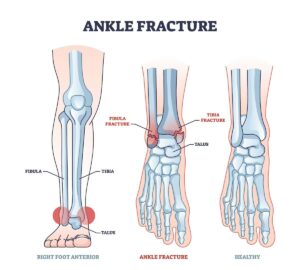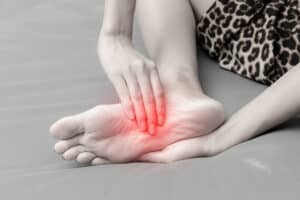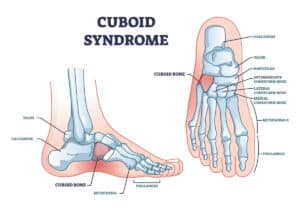Free download: Top 10 Natural & Easy Remedies for Joint Pain from Home. Learn these helpful remedies.
Estimated Reading Time: 8 minutes read
Achilles tendinitis is a condition that can significantly impact mobility and daily activities. Understanding its causes and symptoms is crucial for effective management and prevention. This comprehensive guide delves into these aspects, offering insights into why this condition occurs and how it manifests.
Table of Contents
Causes of Achilles Tendinitis
Achilles tendinitis typically results from repetitive stress to the Achilles tendon, the thick band of tissue connecting the calf muscles to the heel bone. Several factors contribute to its development:
- Overuse and Strain: A sudden increase in physical activity, particularly activities that involve running or jumping, can strain the tendon. Athletes who intensify their training regimen are especially prone to this condition.
- Tight Calf Muscles: When calf muscles are tight, they put extra strain on the Achilles tendon, particularly during activities like climbing stairs or running.
- Inadequate Footwear: Wearing shoes that do not provide proper support, especially during exercise, can stress the tendon more. Old or worn-out shoes fail to cushion and support the feet adequately, leading to increased strain.
- Age-Related Wear: As individuals age, tendons become less flexible and more prone to injury. Middle-aged and older adults who participate in sports are at a higher risk.
- Physical and Environmental Factors: Training on hard or uneven surfaces can increase the risk of Achilles tendinitis. Additionally, physical factors like flat feet can put extra stress on the tendon.
Symptoms of Achilles Tendinitis
Recognizing the symptoms of Achilles tendinitis is key to early intervention and effective management. Common symptoms include:
- Pain and Stiffness: The most notable symptom is a mild ache in the back of the leg or above the heel after running or other sports activity. Stiffness in the tendon may be particularly noticeable in the morning.
- Worsening Pain: Pain along the Achilles tendon during and especially after running or other sports activities can worsen over time. Pain may be severe enough to hinder daily activities.
- Tendon Thickening: In some cases, the Achilles tendon may thicken, and nodules can form in the area of the tendon rupture.
- Swelling and Warmth: The area around the tendon may become swollen and warm to the touch, particularly after prolonged activity.
- Decreased Range of Motion: Experiencing difficulty in flexing the foot or pointing the toes toward the shin can be a sign of Achilles tendinitis.
Why and How Exercise Helps
Exercise plays a pivotal role in treating and preventing Achilles tendinitis. Here’s how:
- Strength Building: Regular exercise strengthens the calf muscles, which in turn reduces the load and stress on the Achilles tendon. Stronger muscles can better support and stabilize the ankle and heel, preventing excessive strain on the tendon.
- Improving Flexibility: Exercises that focus on stretching the calf muscles increase the flexibility of the Achilles tendon. Greater flexibility helps reduce stiffness and alleviate pain, making the tendon less prone to injury.
- Enhanced Blood Circulation: Physical activity improves blood flow to the muscles and tendons, which is essential for the healing process. Increased blood flow brings more nutrients and oxygen to the affected area, accelerating recovery.
- Preventing Atrophy: Inactivity can lead to muscle atrophy, where the muscle weakens due to lack of use. Regular exercise keeps the calf muscles and Achilles tendon active, preserving their strength and function.
- Restoring Range of Motion: Targeted exercises help restore the range of motion in the ankle and calf, which may be limited due to the pain and stiffness of Achilles tendinitis.
Recommended Exercises for Achilles Tendinitis
Incorporating specific exercises into your routine can significantly aid in recovering from and preventing Achilles tendinitis. These exercises are designed to strengthen the calf muscles, improve flexibility, and enhance overall ankle stability. It’s crucial to perform them consistently and properly to achieve the best results.
The following exercises have been identified as particularly beneficial:
1. Calf Stretch
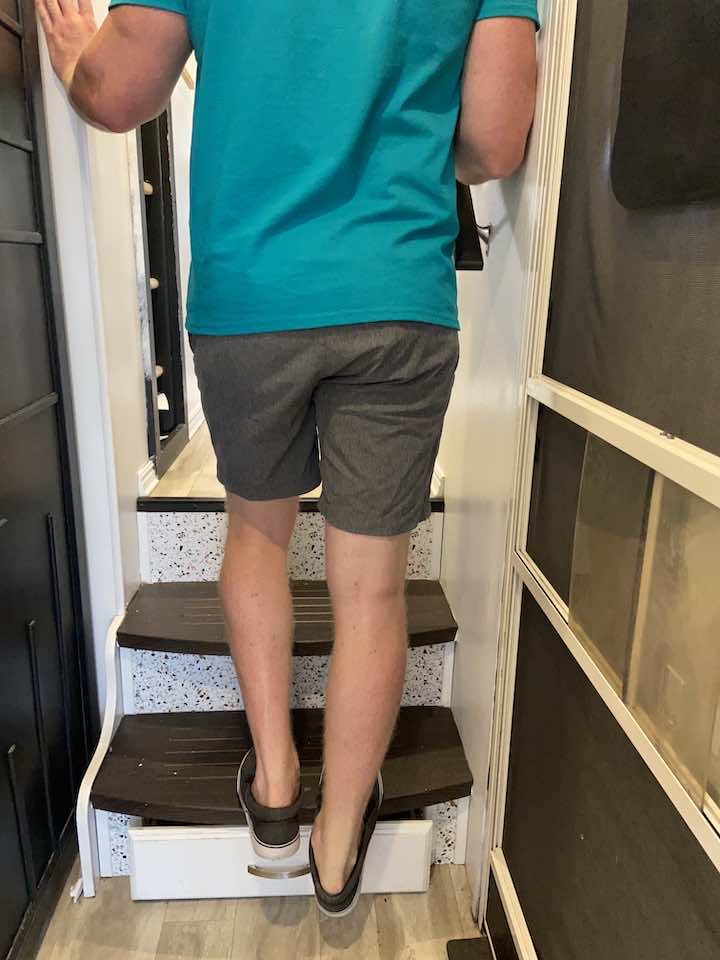
- While holding onto the railing of a staircase, step both feet up.
- Slightly stagger your feet so that the injured heel is hanging off the step.
- Your front leg should bend slightly, while the back (injured) leg’s knee will be straight.
- Hold this stretch for 30 seconds before relaxing.
- Repeat the stretch two more times for a total of three sets.
2. Soleus Calf Stretch
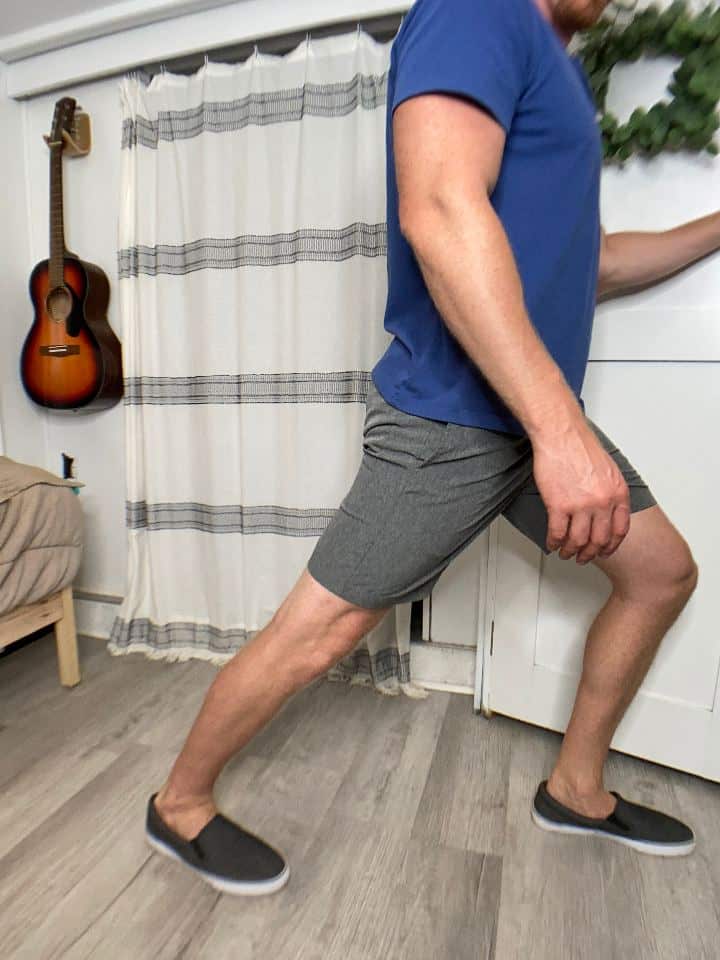
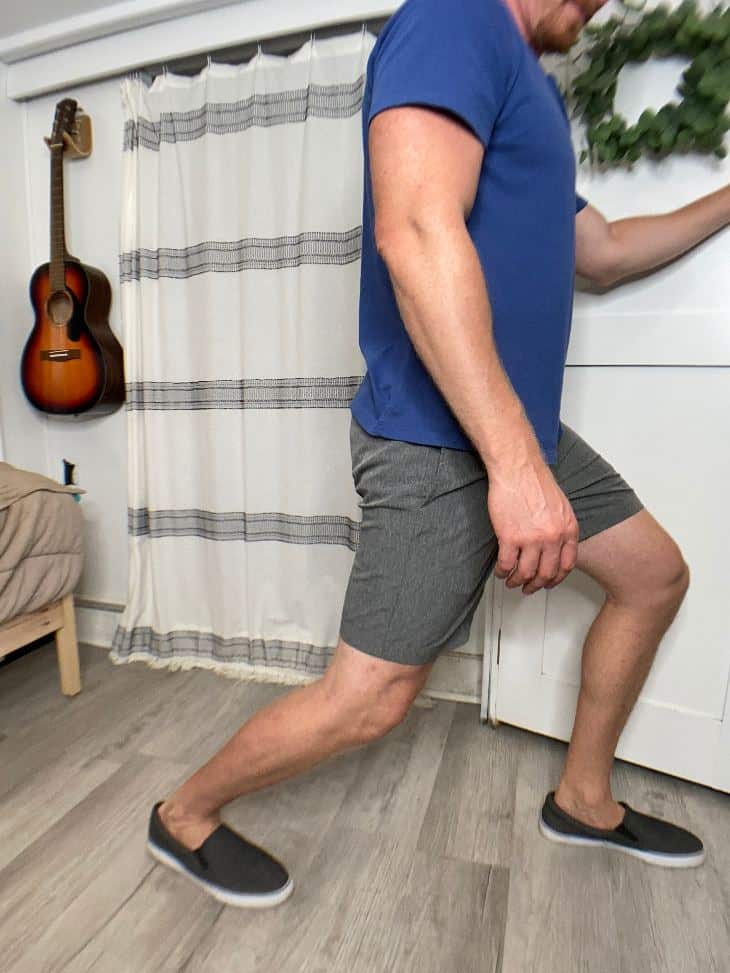
- Perform this stretch exactly like the gastrocnemius calf stretch, except with a small difference.
- Instead of keeping the back leg straight, have the knee slightly bent. You’ll feel more of a direct Achilles tendon stretch with this.
- Hold the position for at least 30 seconds and perform 3 sets.
- Repeat on the other leg.
3. Marble Pick-Ups
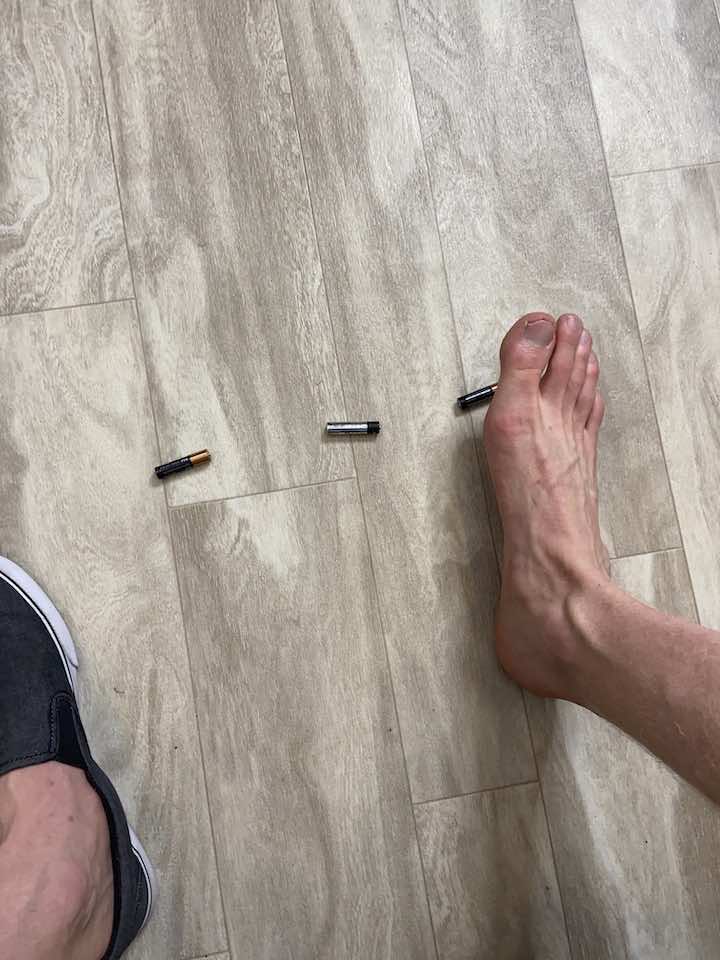
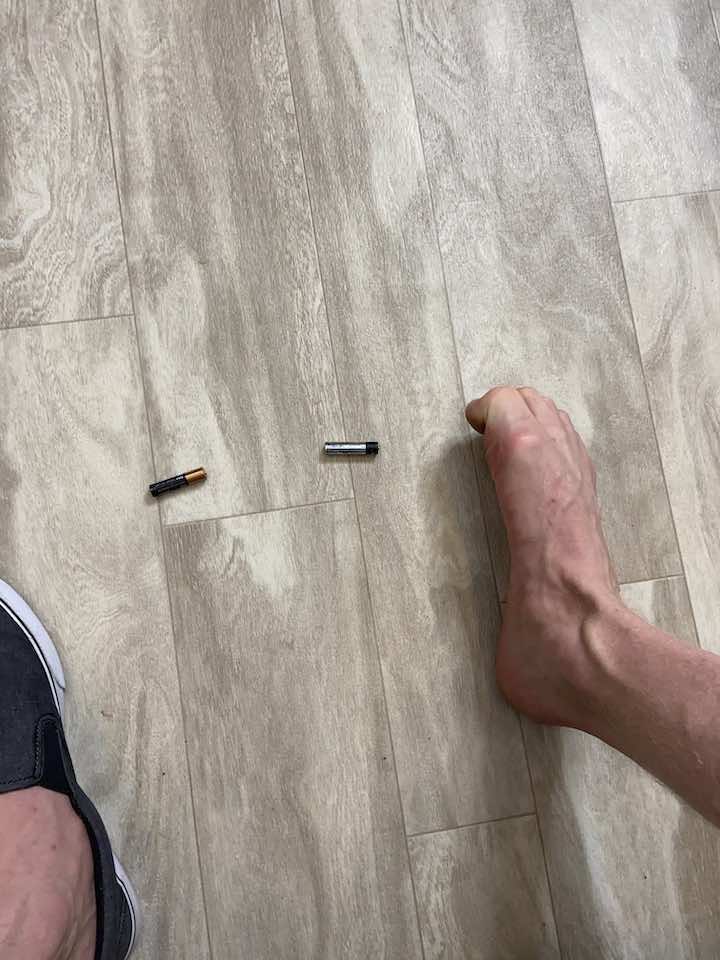
- Get 10-20 marbles and place them on the floor with a cup next to your pile of marbles.
- Stand up and hold onto a steady surface like a counter to help with balance.
- Then in standing, grab a marble with your toes and lift it into the cup. Picking up marbles can be challenging, but the great thing is that even just trying to pick up the marble will strengthen your foot!
4. Arch Doming
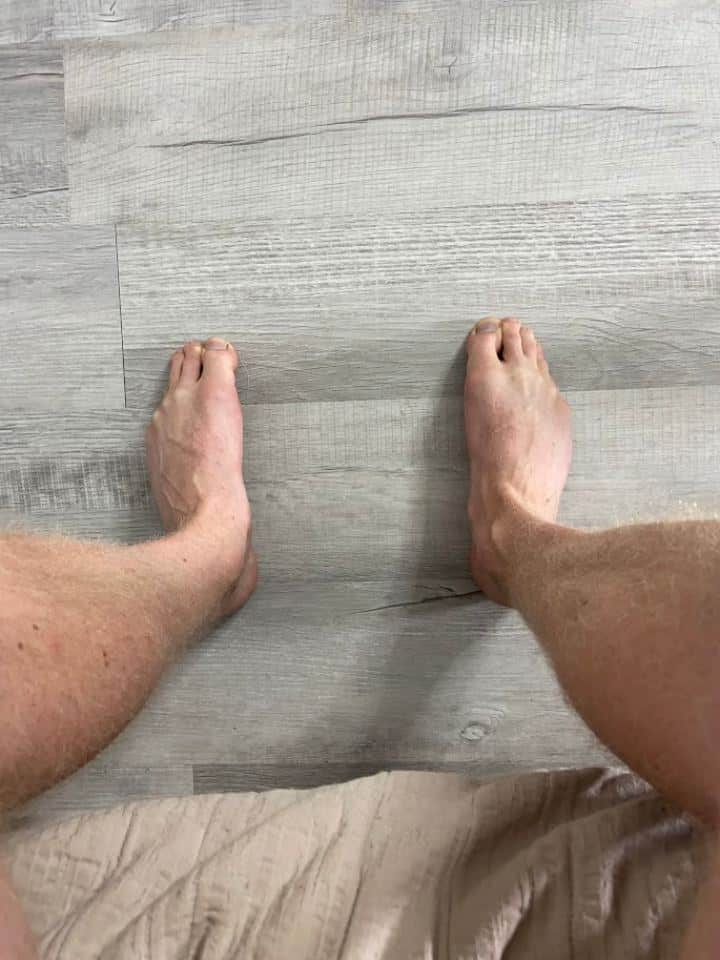
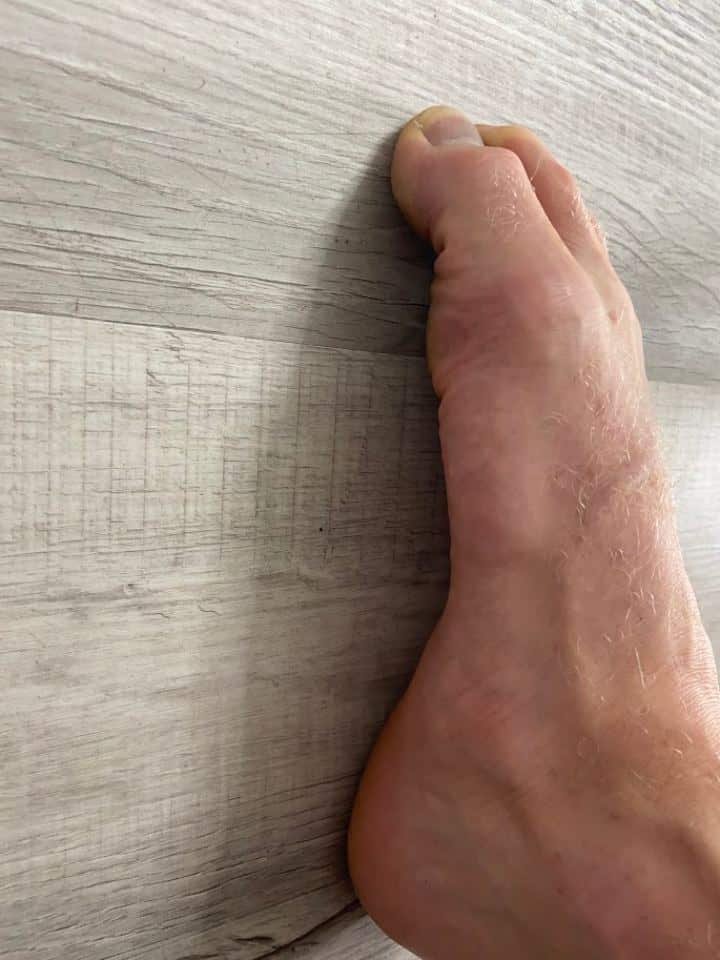
- Starting position: Seated in a chair with the fleet flat on the floor. Shoes should be removed.
- You can practice with both feet at the same time or one foot at a time.
- Squeeze the bottom of the foot and lift the inner arch off the floor, without moving any other part of the foot.
- Hold this lift for 2 seconds, then slowly allow the arches to relax back down to the floor.
- Repeat 10 repetitions for 3 sets.
5. Ankle Eversion with Resistance Band
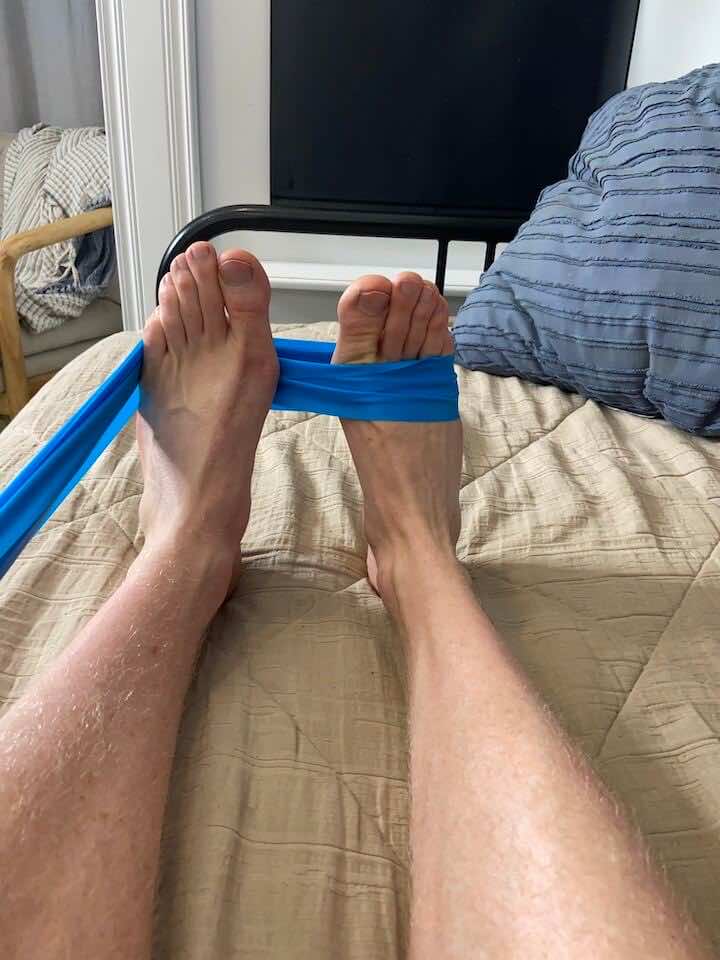
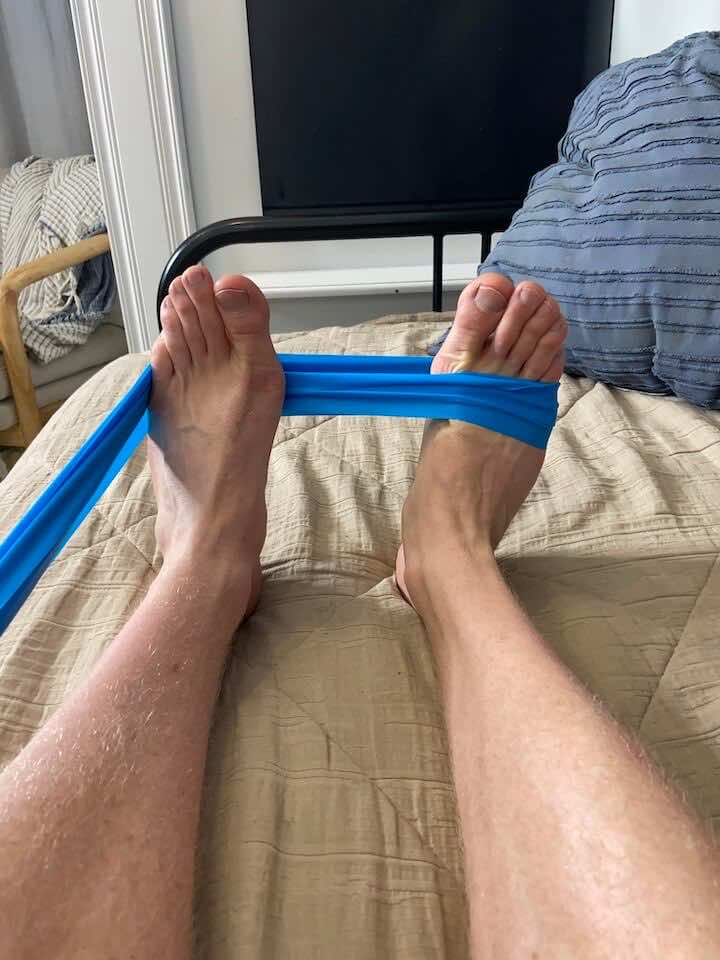
- Lay down on your bed with your ankle off the end.
- Loop the band around your right foot and around your left, as seen in the graphic. We’re going to use your left foot as an anchor for your right foot as your exercise.
- Bring your right foot out like you’re angling your ankle away from your left foot, squeeze in, then relax.
- Do this for 10 repetitions and complete 3 sets in total.
Tip: Work on just moving your ankle and not your entire leg when performing this exercise! See if your knee rolls out at all; try to keep it still.
6. Ankle Inversion with Resistance Band
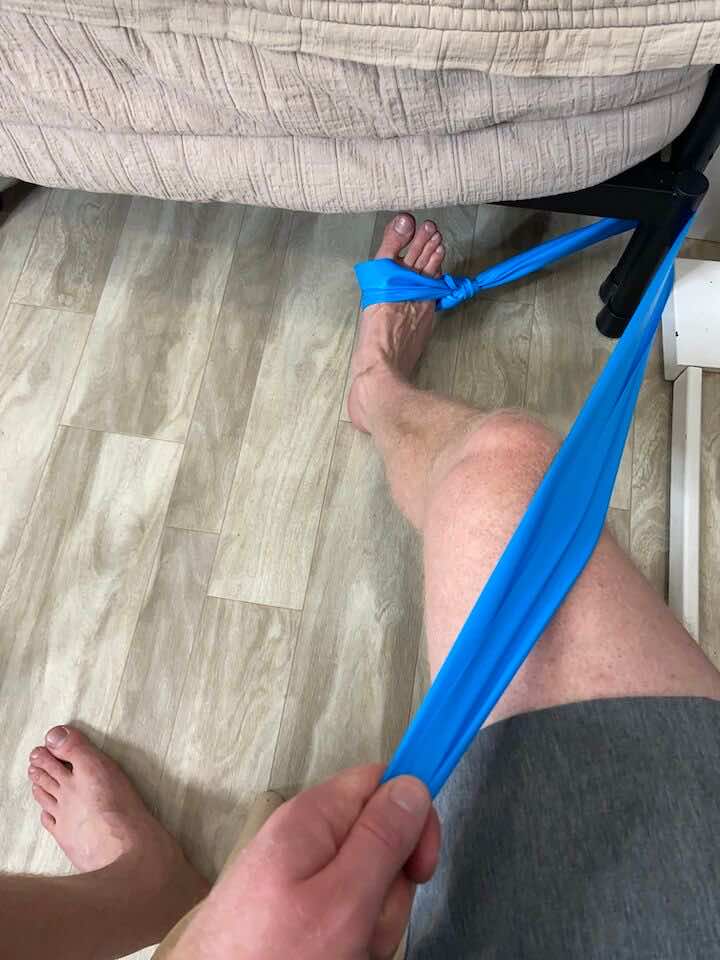
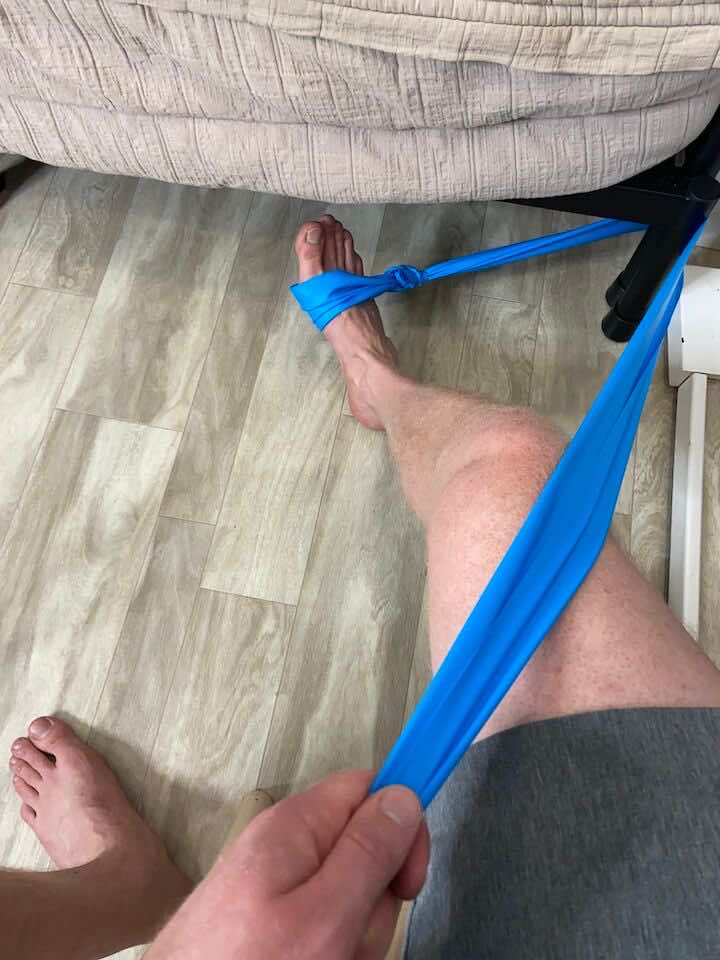
- Sit near a heavy table or sturdy chair that won’t move easily.
- Bring your foot in like you’re angling your ankle toward your other foot, squeeze in, then relax. Loop the resistance band over your foot and around the table or chair leg, as shown in the graphic above.
- Repeat this movement for 10 reps, and do a total of 3 sets.
Tip: Work on just moving your ankle and not your entire leg when performing this exercise! See if your knee rolls out at all, try to keep it still.
7. Ankle Dorsiflexion with Resistance Band
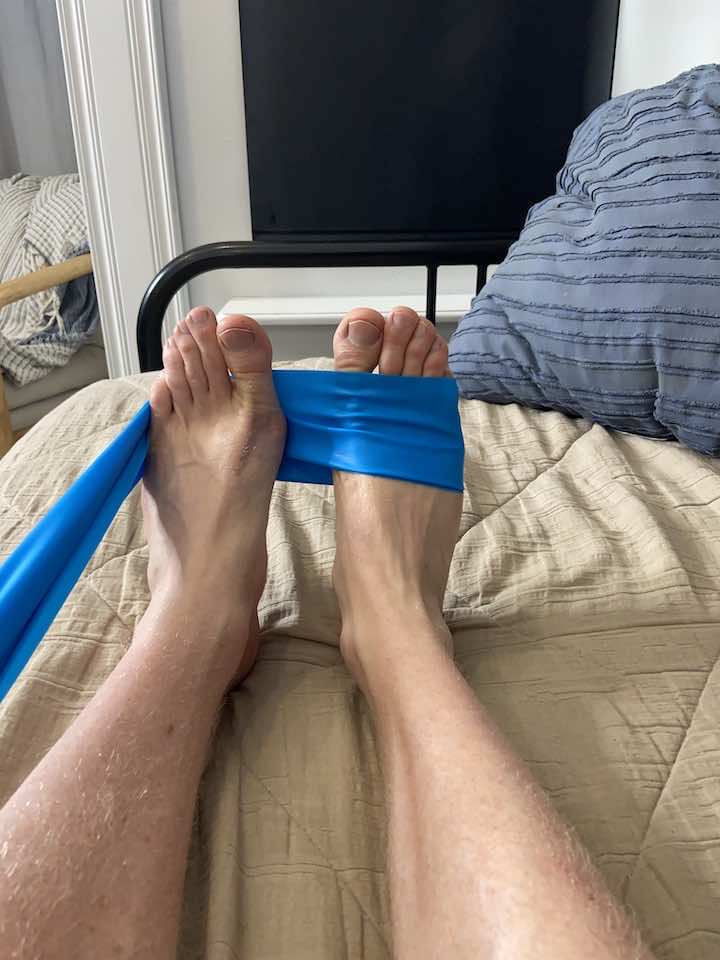
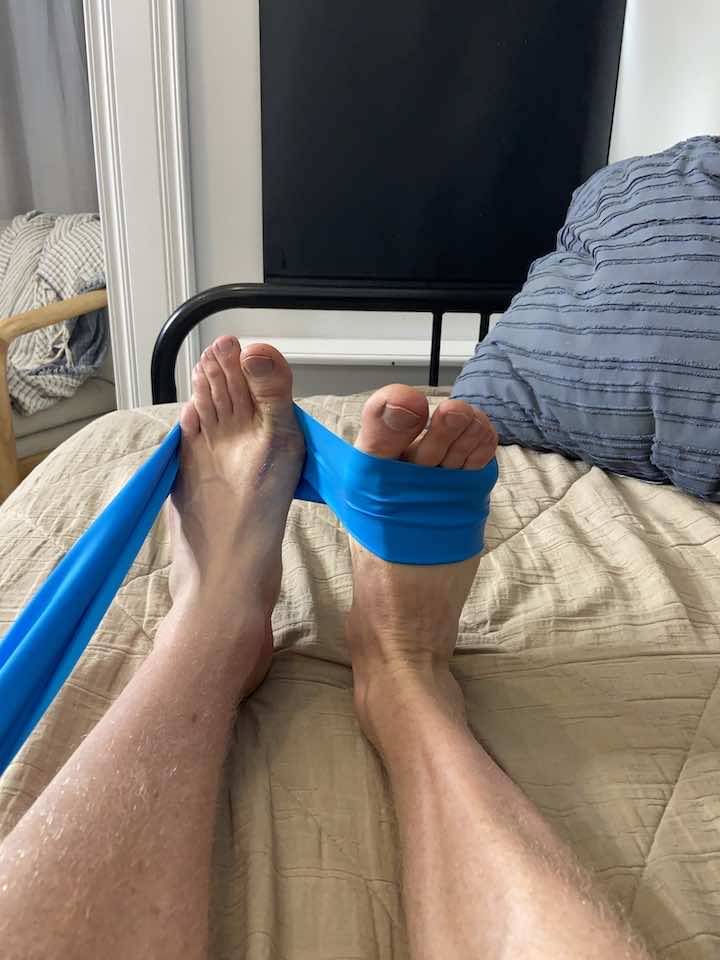
- Lay down on your bed with your ankle off the end.
- Loop the band around your right foot and loop the band around your left foot.
- Point your left foot and hold that position.
- Draw your right foot up like you’re trying to bring your toes to your nose, then relax. Finish the set, then repeat with your left foot.
- Repeat 10 repetitions for 3 sets.
8. Ankle Plantar Flexion with a Resistance Band
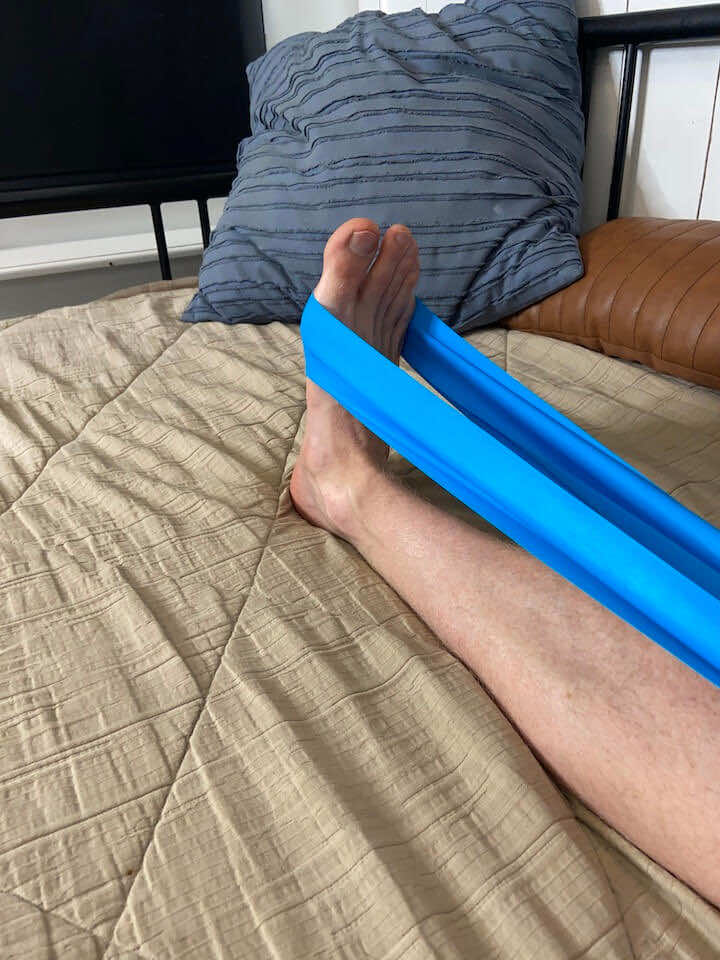
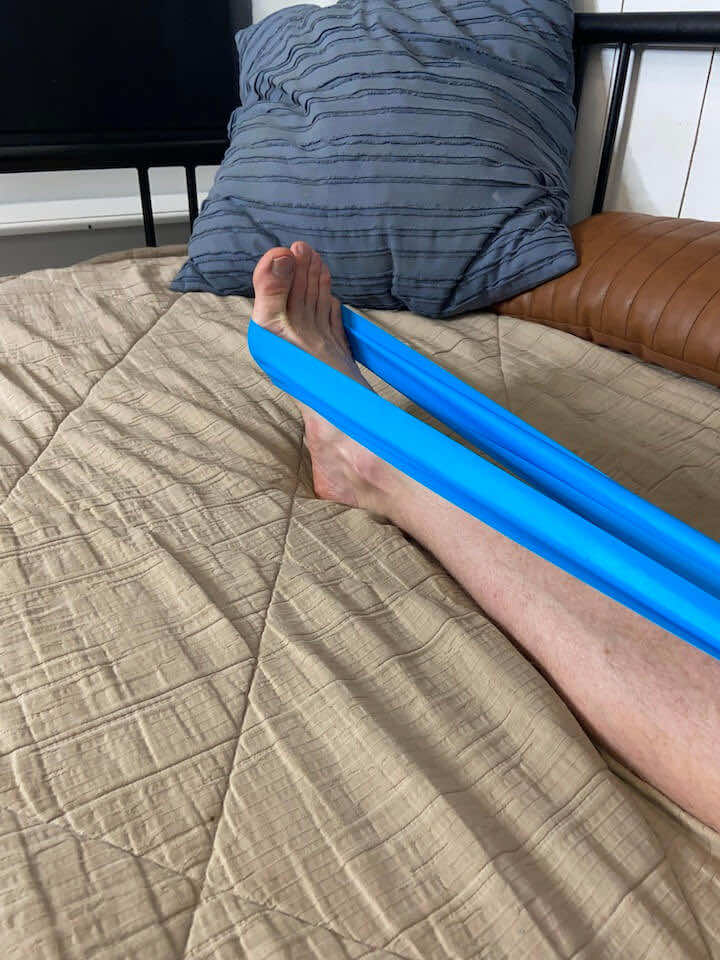
- Lay down on your bed with your ankle off the end.
- Loop the band around your right foot and hold onto the other end of the band with your hands.
- Point your toes and squeeze the back of your calf muscles, then relax. Finish the set, then repeat with your left foot.
- Repeat 10 repetitions for 3 sets.
9. Single Leg Balance
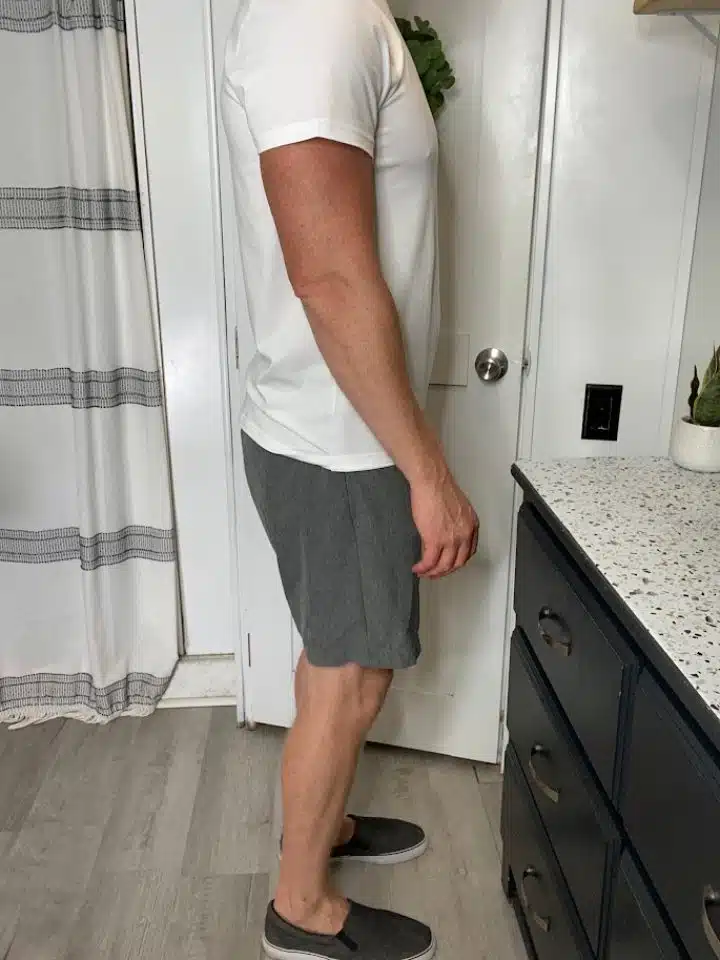
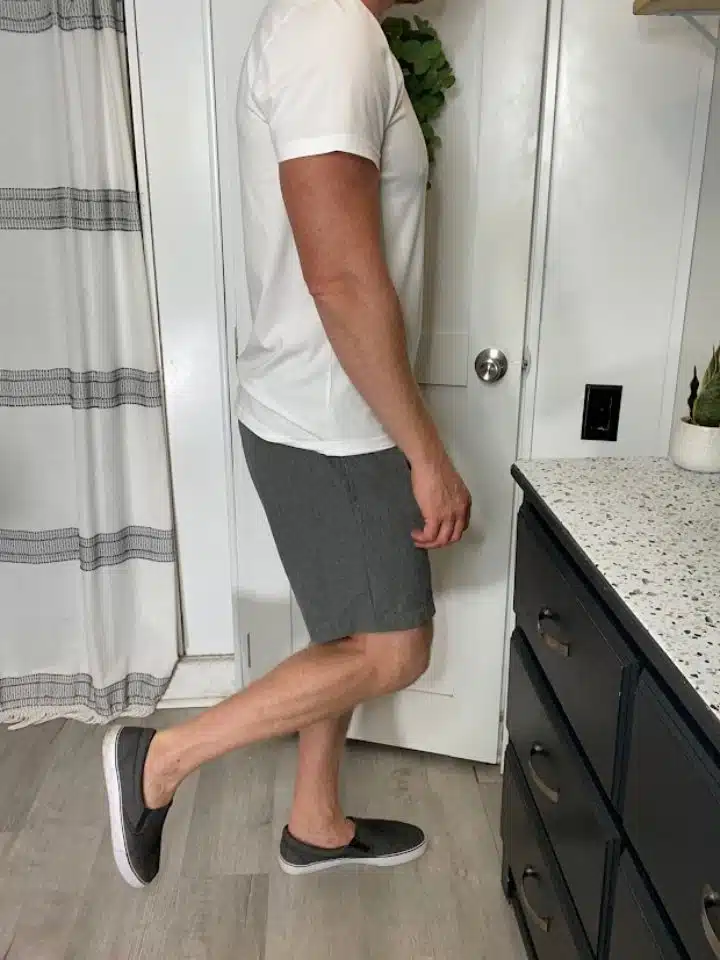
- Starting position: Standing in front of a sturdy surface, such as your countertop.
- Shift all of your weight onto the injured leg (avoid locking into the knee joint), picking the opposite foot up off the floor.
- Practice balancing for 30 seconds (you can use the counter for balance assist as needed).
- Return to your starting position to take a break.
- Repeat 2 more times on both sides.
It’s important to approach these exercises with caution, especially if you’re already experiencing symptoms of Achilles tendinitis. Start slowly and increase the intensity only as your comfort level allows. If you experience pain or discomfort while performing these exercises, it’s advisable to consult a healthcare professional. Remember, these exercises are not just a remedy but also a preventive measure to maintain the health and strength of your Achilles tendon.
Conclusion
Understanding the causes and symptoms of Achilles tendinitis is crucial for timely and effective management. Engaging in targeted exercises, along with being mindful of these risk factors and symptoms, can aid in recovery and prevent future occurrences of this condition. It’s important to seek professional medical advice if symptoms persist or worsen, as they may suggest a more severe condition.


